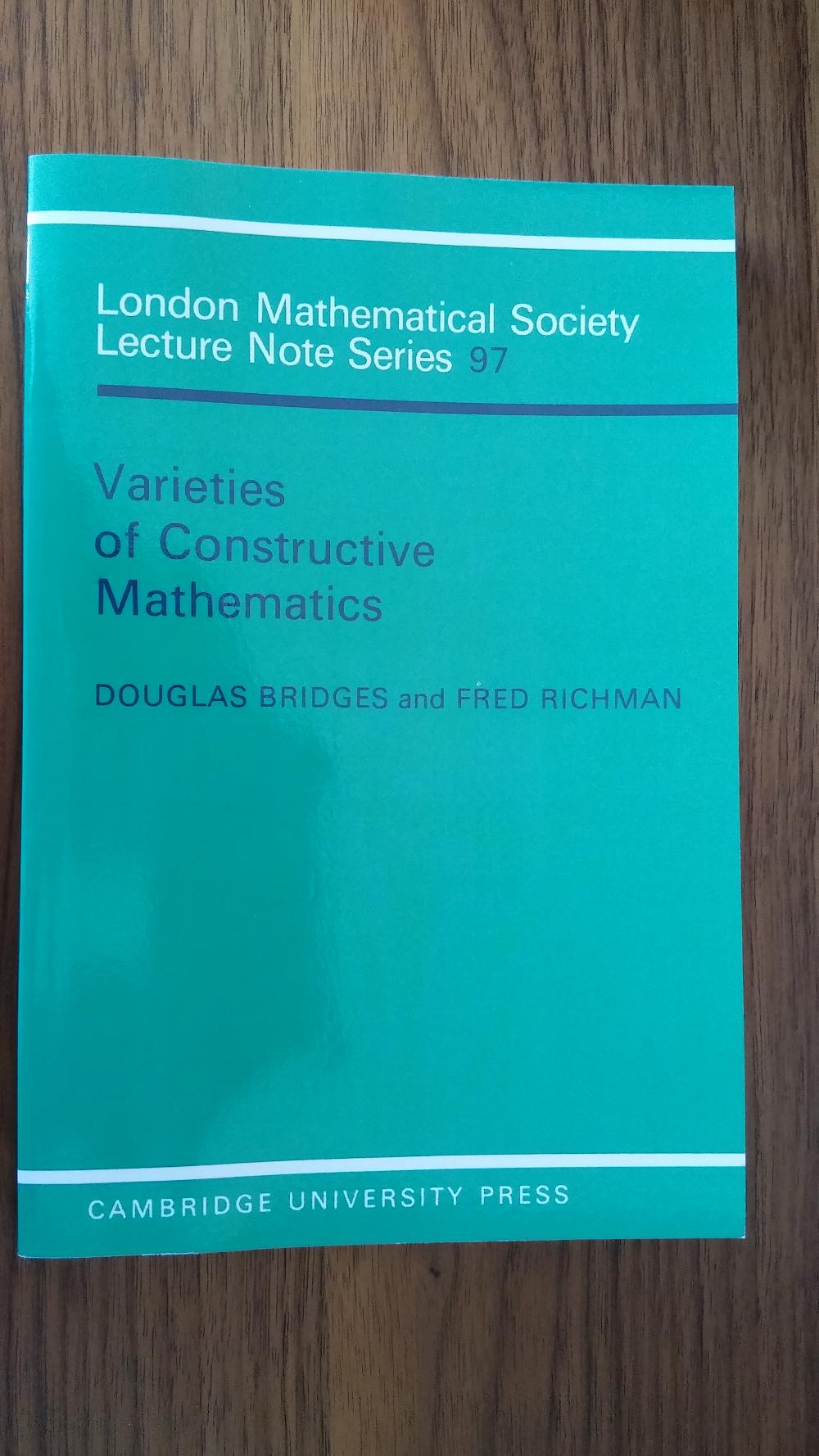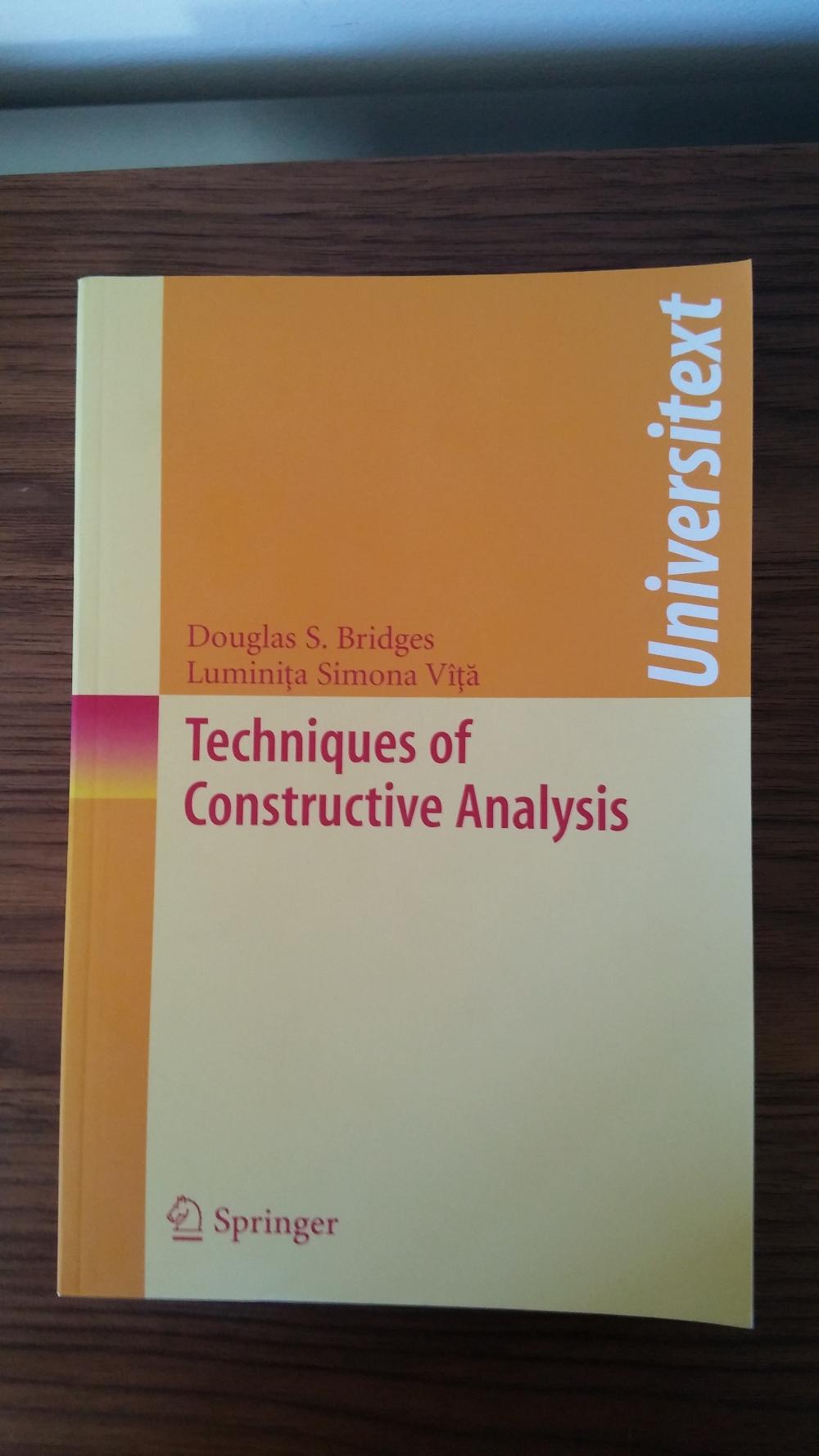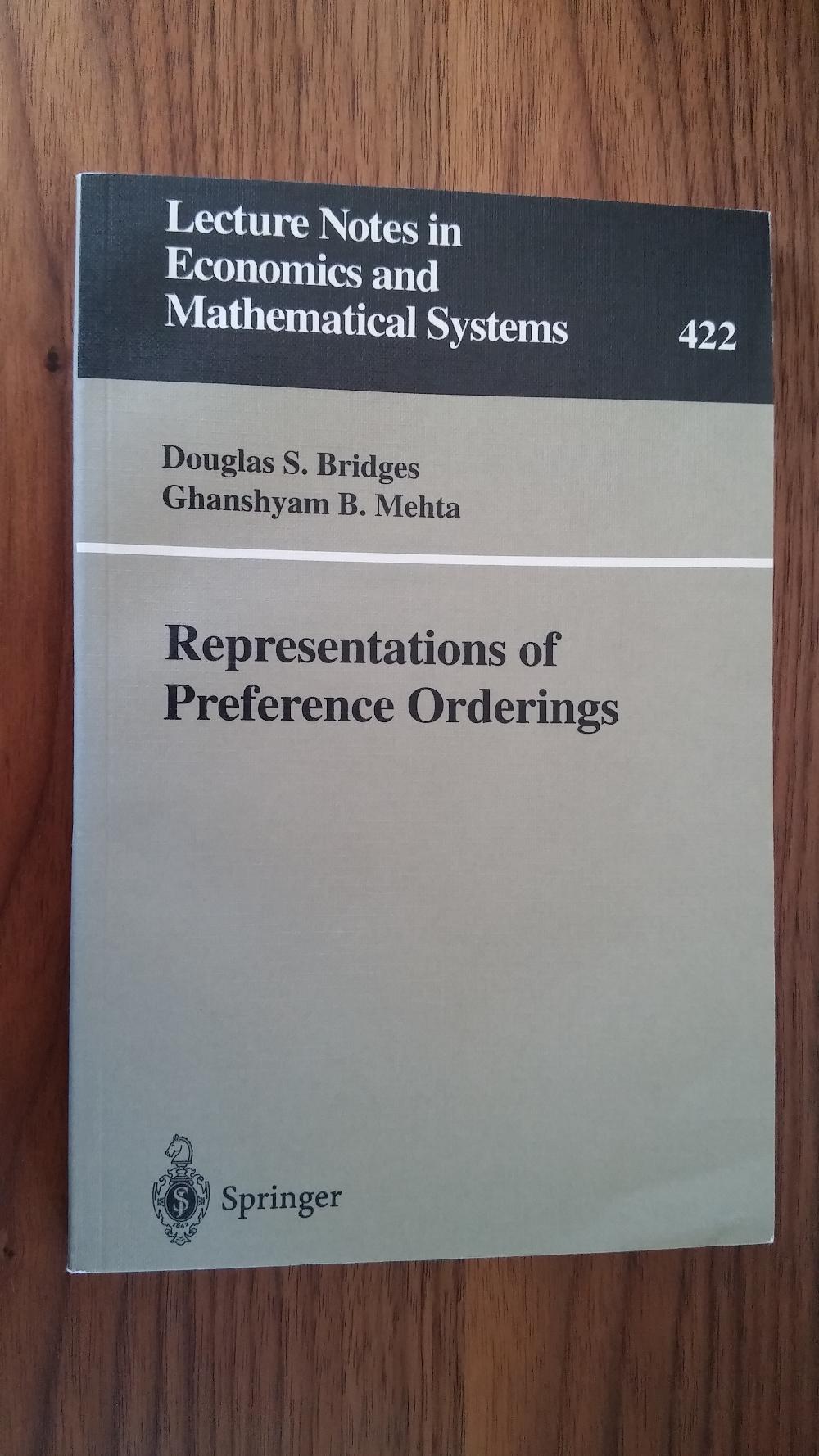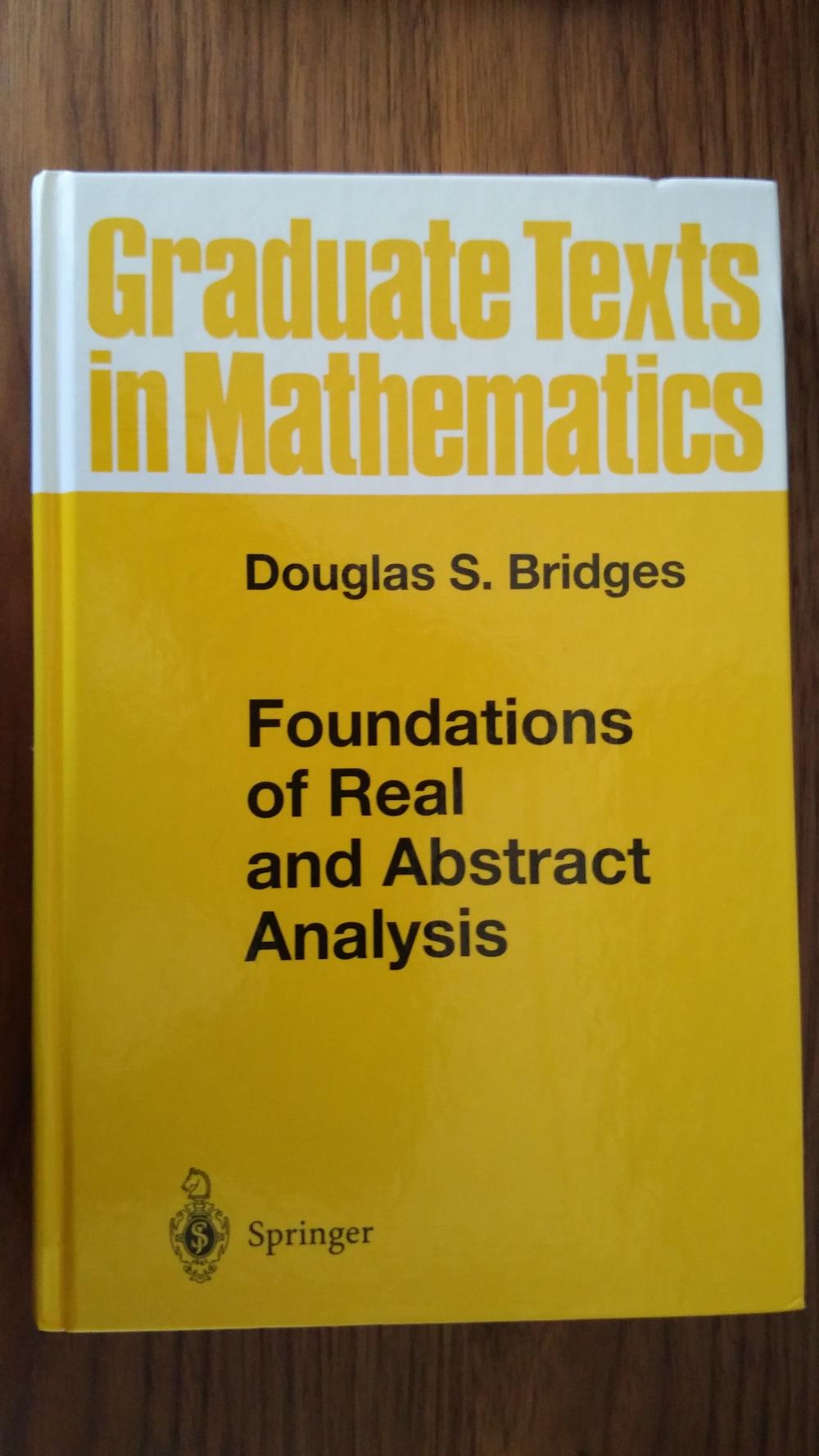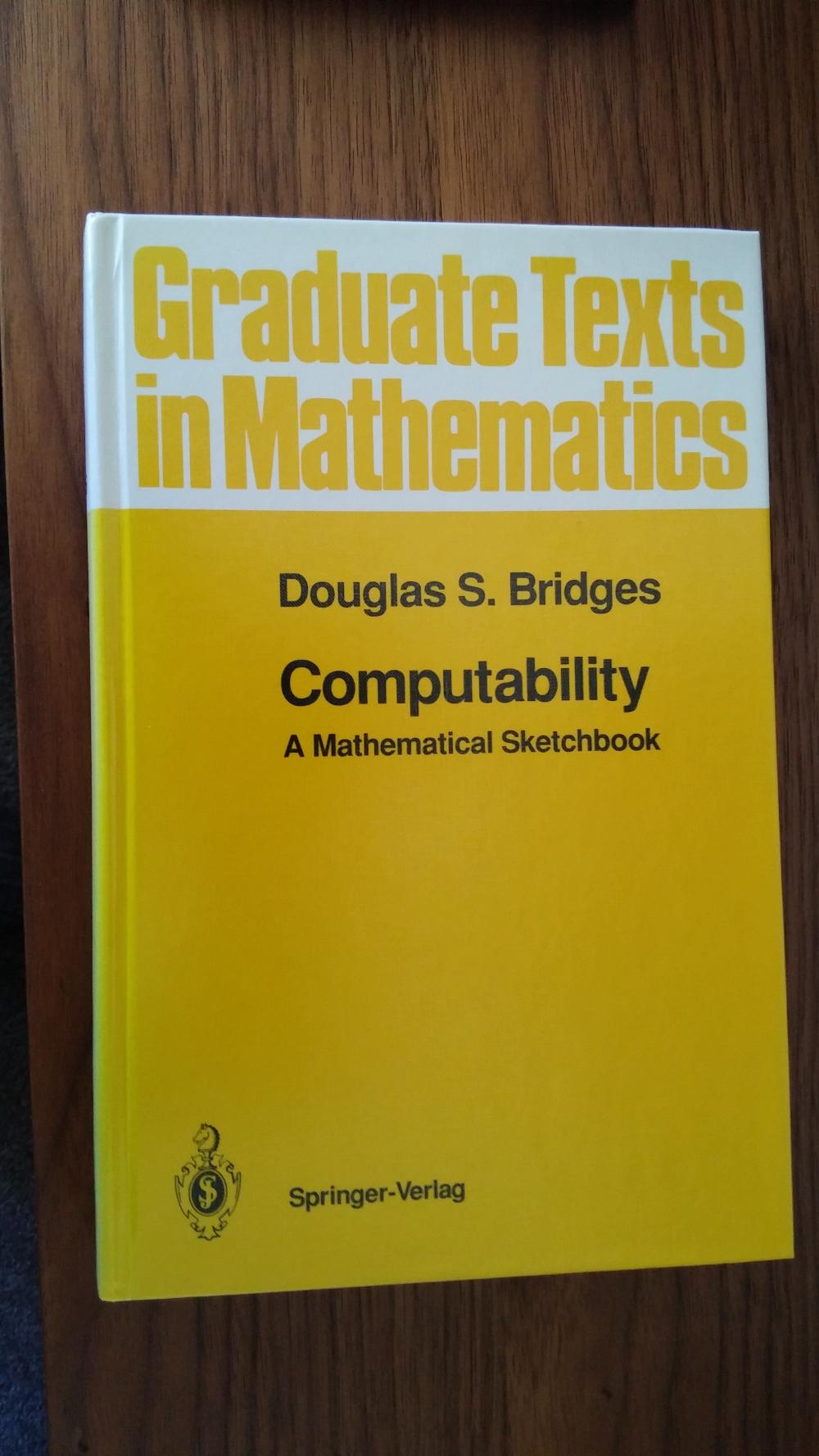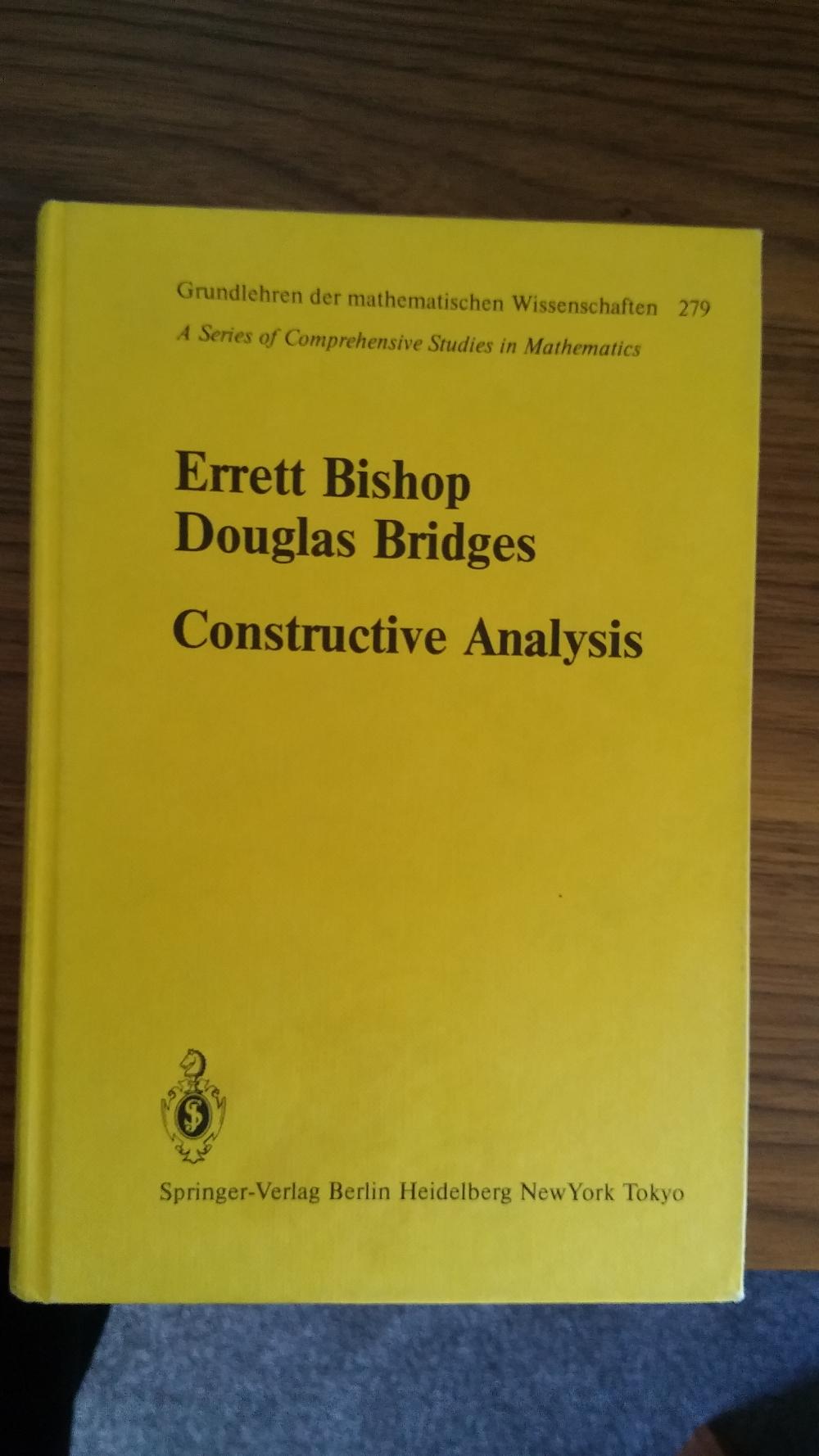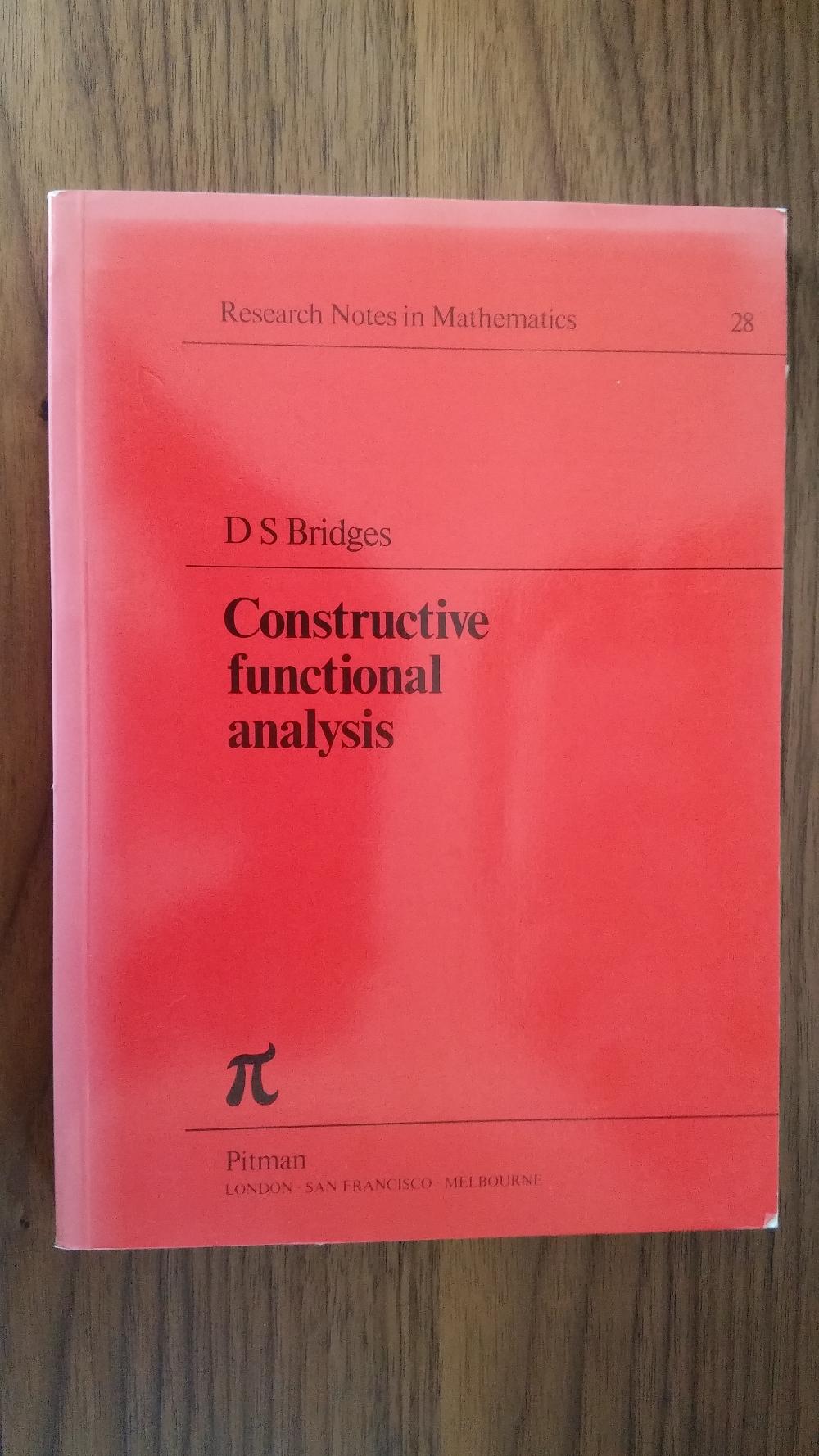My Research Interests
My main research has been in constructive mathematics (see below), in particular: real, complex, and functional analysis; topology (the theory of apartness spaces); foundations (Morse set theory and reverse mathematics).
My most significant recent publications in constructive mathematics include the two books with Luminiţa Vîţă: Apartness and Uniformity: A Constructive Development (CiE series "Theory and Applications of Computability", Springer Verlag, Heidelberg, 2011) and Techniques of Constructive Analysis (Springer New York, 2006).
My secondary research interest has been mathematical economics - preference, utility, and demand - both classical and constructive. My most significant classical paper in economics is A numerical representation of preferences with intransitive indifference (J. Math. Economics 11, 25–42, 1983). Perhaps the most important constructive papers are The constructive theory of preference orderings on a locally compact space (Indag. Math. 92, 141-165, 1989) and The construction of a continuous demand function for uniformly rotund preferences (J. Math. Economics 21, 217–227, 1992).
I've also written papers on other topics, such as ring theory, quantum logic, and computability theory.
What is Constructive Mathematics?
Constructive Mathematics (CM) was originally based on the belief, held by Kronecker in the late nineteenth century and powerfully advocated by Brouwer from 1907 onwards, that mathematical objects exist if and only if they are constructed. Thus, for the pioneers of the subject, it was not acceptable to prove a theorem of the form 'There exists a boojumlike snark' by first assuming that there does not exist a boojumlike snark and then deriving a contradiction. Such a procedure would prove the impossibility of there being no boojumlike snarks, but would not show you how, or where, to find one.
Until 1967, there was little evidence to counter Hilbert's belief that the intuitionistic logic underlying CM could never lead to significant, deep mathematics in the way that traditional classical logic could. However, in that year Errett Bishop (http://https://en.wikipedia.org/wiki/Errett_Bishop) published Foundations of Constructive Analysis, the fruits of 2–3 years of intensive research by him into constructive real and complex analysis, measure theory, functional analysis, operator theory, Haar measure ... . Not only did that book lead me into CM, but also it showed conclusively that Hilbert had got it wrong: you can do significant, deep mathematics constructively.
In practice, what the constructive mathematician develops is mathematics with intuitionistic logic (plus some appropriate set- or type-theoretical foundation, such as the constructive Zermelo-Fraenkel set theory (CZF) of Aczel & Rathjen, the constructive Morse set theory (CMST) of Bridges & Alps, and Martin-Löf Type Theory (MLT). You don't need to subscribe to Brouwer's intuitionistic philosophy---or indeed to any particular philosophy of mathematics---in order to work in, and enjoy, CM. You do, however, need a certain single-minded resolve to work exclusively with intuitionistic logic, since the slightest lapse into classical logic may jeopardise the constructive status of your proofs.
For more on constructive mathematics - what is it and what it can do - see the article in the Stanford Encyclopedia of Philosophy at https://plato.stanford.edu/entries/mathematics-constructive/
How did I get into Constructive Mathematics?
When studying von Neumann algebra theory (1) at Newcastle, I found myself disturbed - exactly in what way I could not then say - by proofs of the 'existence' of certain projections that proceeded by first assuming their non-existence, then using Zorn's Lemma to produce a maximal family of projections with certain properties, and finally - often after a long and ingenious argument - arriving at a contradiction from which one concluded that the originally desired projections existed after all. It was not until 11 April 1968, by which time I had already decided to stop Ph.D. work and go school-teaching, that I began to realise the source of my unease with such proofs. For it was on that day that I saw displayed in James Thin's bookstore in Edinburgh, Errett Bishop's book Foundations of Constructive Analysis (FCA), which changed my mathematical life for ever.(2)
Bishop's cogent arguments clarified my feelings about existence proofs-by-contradiction, and led me to resolve that if ever I returned to mathematical research, it would be in some aspect of constructive analysis. In my time at teacher-training college and as a teacher at Clifton College, Bristol, I was able to read further in FCA, so that on going up to Oxford to start a new Ph.D., I was fairly well prepared in my chosen subject. It was fortunate that in Robin Gandy (3) and Michael Dummett (4) there were two first-rate academics with a related background and with a willingness to take on a graduate student whose mathematical interests were, for that time, rare and relatively eccentric.
A seminal year in my development as a constructive mathematician was in 1979–80, when Vivien and began our married life with a leave at New Mexico State University, Las Cruces. Working there with the constructive group, led by Fred Richman (5), was a richly instructive and fruitful experience. Among the fruits of that year are our paper on the constructive versions of Picard's Theorem in complex analysis (6), one in complex analysis (7), and my first, and hardest, paper in mathematical economics (8).
Footnotes:
(1) https://en.wikipedia.org/wiki/Von_Neumann_algebra
(2) It was just as well that I had enough cash to buy the book; for that was the one and only occasion that I ever saw it on a bookseller's shelves.
(3) http://www.independent.co.uk/news/people/obituaryrobin-gandy-1583406.html
(4)https://www.theguardian.com/world/2011/dec/28/sir-michael-dummett
(5) http://math.fau.edu/richman/
(6) 'Picard's theorem' (with A. Calder, W.H. Julian, R. Mines, and F. Richman), Trans. Amer. Math. Soc. 269(2), 513--520, 1982.
http://www.ams.org/journals/tran/1982-269-02/S0002-9947-1982-0637705-7/S0002-9947-1982-0637705-7.pdf
(7) 'On the isolation of zeroes of an analytic function', Pacific J. Math. 96(1), 13-22, 1981.
http://msp.org/pjm/1981/96-1/pjm-v96-n1-p02-s.pdf (Errata at http://msp.org/pjm/1981/97-2/pjm-v97-n2-p25-s.pdf)
(8) 'Preference and utility---a constructive development', J. Math. Economics 9, 165-185, 1982.
http://www.sciencedirect.com/science/article/pii/0304406882900258
.jpg)

.jpg)
